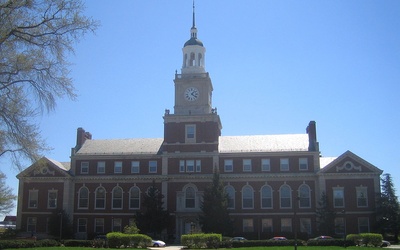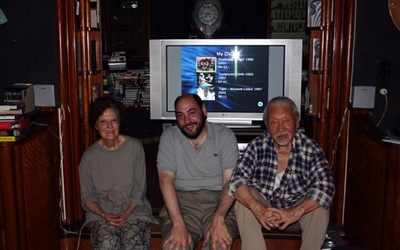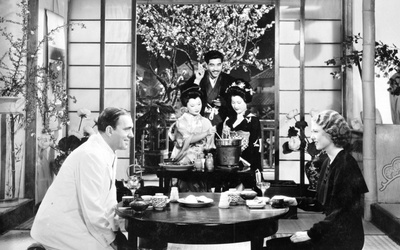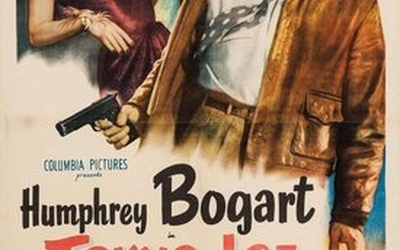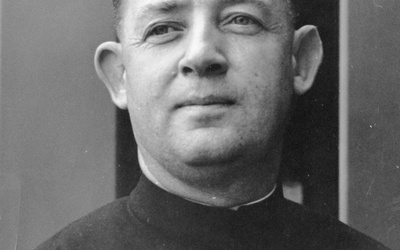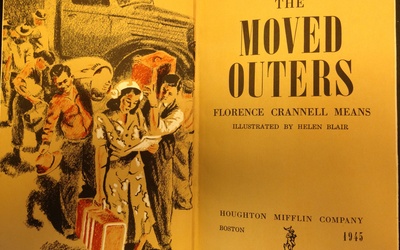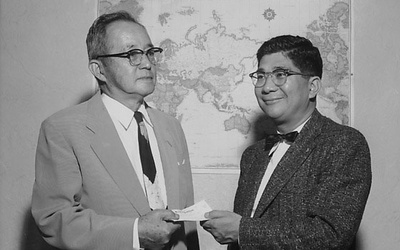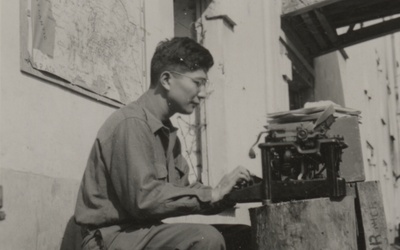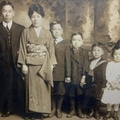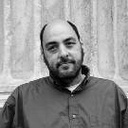
Greg Robinson
@GregGreg Robinson, a native New Yorker, is Professor of History at l'Université du Québec À Montréal, a French-language institution in Montreal, Canada. He is the author of the books By Order of the President: FDR and the Internment of Japanese Americans (Harvard University Press, 2001), A Tragedy of Democracy; Japanese Confinement in North America (Columbia University Press, 2009), After Camp: Portraits in Postwar Japanese Life and Politics (University of California Press, 2012), Pacific Citizens: Larry and Guyo Tajiri and Japanese American Journalism in the World War II Era (University of Illinois Press, 2012), and The Great Unknown: Japanese American Sketches (University Press of Colorado, 2016), as well as coeditor of the anthology Miné Okubo: Following Her Own Road (University of Washington Press, 2008). Robinson is also coeditor of the volume John Okada - The Life & Rediscovered Work of the Author of No-No Boy (University of Washington Press, 2018).
His historical column “The Great Unknown and the Unknown Great,” is a well-known feature of the Nichi Bei Weekly newspaper. Robinson’s latest book is an anthology of his Nichi Bei columns and stories published on Discover Nikkei, The Unsung Great: Portraits of Extraordinary Japanese Americans (University of Washington Press, 2020). It was recognized with an Association for Asian American Studies Book Award for Outstanding Achievement in History Honorable Mention in 2022. He can be reached at robinson.greg@uqam.ca.
Updated March 2022
Stories from This Author
Stepping over the Color Line: Nikkei at Historically Black Colleges and Universities
Sept. 30, 2019 • Greg Robinson
One pillar of American education is the network of Historically Black Colleges and Universities (HBCU). Founded to give free blacks access to higher education in the century following Emancipation, a period when African American students remained largely excluded from mainstream universities, these institutions sprang up all through the South and borderlands. Today, fifty years after the Civil Rights Movement, there are some one hundred HBCUs, both public and private, still in operation in the United States. Even though their primary …
Shinkichi Tajiri and the Paradoxes of Japanese American Identity
Sept. 17, 2019 • Greg Robinson
Although Shinkichi Tajiri was born and spent his early years in the United States, and served in the US army during World War II as part of the renowned “Go for Broke” 442nd Regimental Combat Team, he is best known for his work as an artist in Europe. In fall 1948 Shinkichi Tajiri sailed to France. He remained in Europe in “self-imposed exile,” as he later termed it, for the rest of his life. At first, he lived in Paris. …
Ken Magazine and Prewar anti-Japanese Propaganda
Aug. 27, 2019 • Greg Robinson
One of the larger causes of Executive Order 9066, and the U.S. government’s wartime confinement of Japanese Americans, can be found in the widespread expressions of race-based fear and suspicion against West Coast Issei and Nisei in the years before Pearl Harbor. During these years hate merchants, both on the West Coast and beyond, repeatedly accused Japanese Americans of being spies and saboteurs for Tokyo—launching their charges on the flimsiest of evidence or no evidence at all. As I reported …
Paul Takagi: A fearless Advocate
June 13, 2019 • Greg Robinson
Many notable events of 1969—the first landing on the Moon, the Woodstock Rock Festival, the Stonewall Riots, and the New York Mets World Series victory, among others—have been the subject of widespread commemoration lately, as their respective 50th anniversaries dawn and people take stock of the diverse legacies of that monumental year. Asian American Studies scholars, for their part, are now celebrating the 50th anniversary of the birth of the field. Popular attention has tended to focus on the student strikes at …
Teru Shimada - a Japanese American Pioneer in Hollywood - Part 1
April 30, 2019 • Greg Robinson
One of the great leading men of motion picture history was Sessue Hayakawa, whose magnetic good looks and style captivated audiences around the world. Hayakawa and his wife Tsuru Aoki were top stars in Hollywood during the silent film era. However, with the coming of sound film, their careers declined. Hayakawa left Hollywood for a generation, made movies in France and Japan, then returned to the United States after World War II to play character parts, most notably his Oscar-nominated …
Teru Shimada - a Japanese American Pioneer in Hollywood - Part 2
April 30, 2019 • Greg Robinson
Read Part 1 >> In summer 1945, while still confined at Poston, Teru Shimada was cast as a Filipino scout in a war propaganda film for 20th Century Fox, to be entitled “American Guerilla in the Philippines.” (Production of the film was set for Puerto Rico, because its beaches and terrain were considered to resemble those of the Philippines). However, once Japan surrendered and the war ended in late summer 1945, the project was shelved indefinitely. Shimada later claimed that …
Brother Theophane Walsh
April 9, 2019 • Greg Robinson , Jonathan van Harmelen
In November 2018, the New York Times wrote an article highlighting the work of Father Ruskin Piedra, the priest of the church Our Lady of Perpetual Help in New York City.1 At 84, he busies himself with supporting litigation on behalf of immigrants - some from his own parish - to protect them from deportation. Amid the dreadful news of family separation and confinement of children in detention centers, Father Piedra’s work is a hopeful reminder that despite the callousness …
Ways and Means: The Woman Behind The Moved-Outers
March 15, 2019 • Greg Robinson
In the face of the tragic events of official confinement and loss that Japanese Americans experienced during World War II, there were numerous non-Japanese who found ways to help Issei and Nisei, or who protested their official treatment. A number of years ago, the Board of Directors of the Military Intelligence Service Association of Northern California approved the founding of the Kansha project to commemorate these individuals, whom one might call the “righteous gentiles” of Japanese America. Writer and activist …
The Undiscovered History of Japanese Americans and the Church of Jesus Christ of Latter-day Saints - Part 2
Jan. 31, 2019 • Greg Robinson , Christian Heimburger
Read Part 1 >> As mentioned, throughout the prewar years Japanese Americans, especially those in the Intermountain West, developed connections of different kinds with members of the Church of Jesus Christ of Latter-day Saints, or LDS church. To show their appreciation to the Mormon church for its friendly attitude toward Japan, in April 1941 a group of Salt Lake Japanese Americans, led by Mike Masaoka, presented 25 Japanese cherry trees for planting around the Mormon Tabernacle. This relationship would be tested …
The Undiscovered History of Japanese Americans and the Church of Jesus Christ of Latter-day Saints - Part 1
Jan. 30, 2019 • Greg Robinson , Christian Heimburger
A rather unsuspected but significant force in Japanese American life has been the Church of Jesus Christ of Latter-day Saints (whose members are commonly known as Latter-day Saints or Mormons—the latter name derives from the Book of Mormon, the Church’s key scriptural text). Throughout the first half of the 20th century, LDS congregations and missionaries interacted with Japanese communities in different locations, even as thousands of Japanese Americans subjected to official confinement in Utah and Idaho during World War II …

